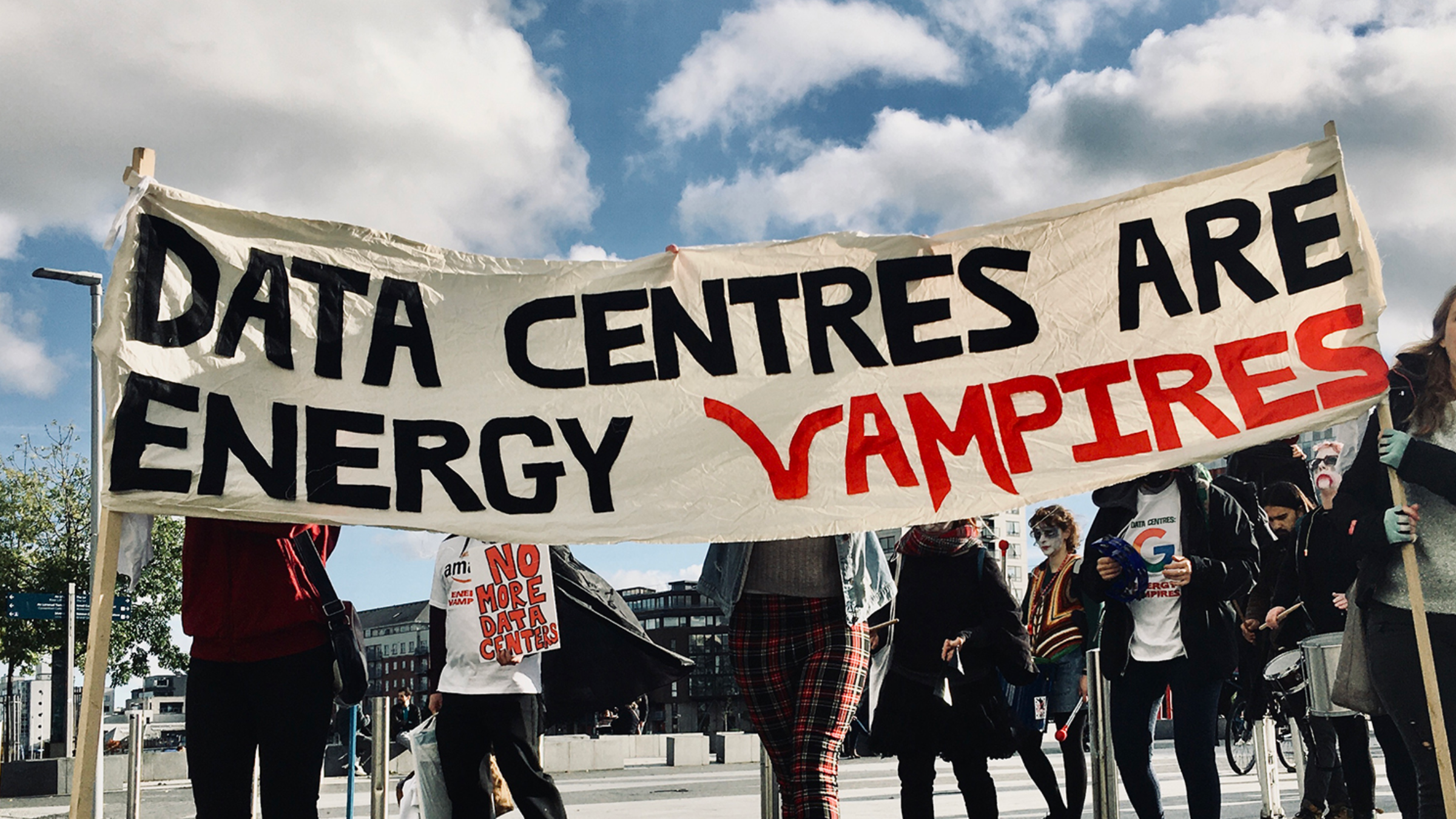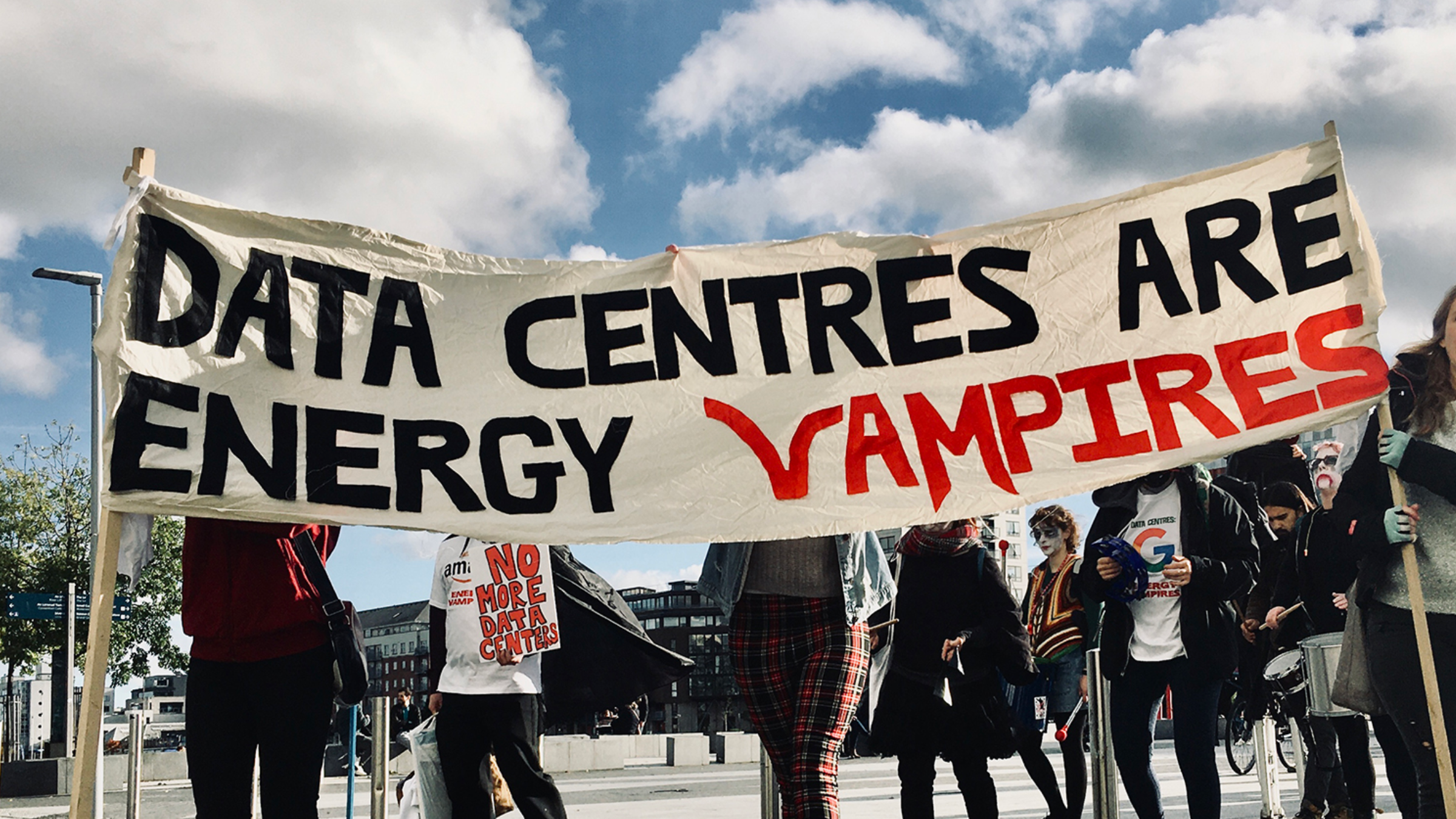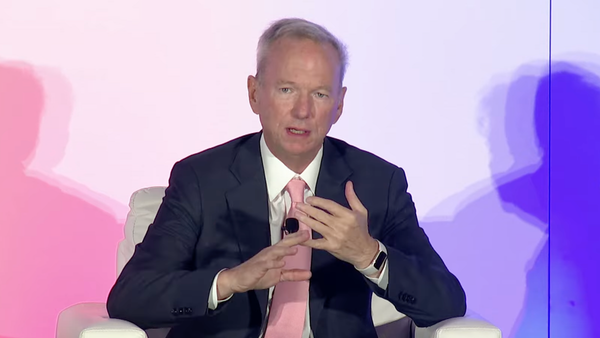
Artificial intelligence is going to upend every aspect of our society — or at least that’s what some of the leading people in the tech industry want us to believe. For the past year, they’ve been adamant that every worker will have an AI assistant, chatbots will take the place of doctors and teachers, and their products might even get to the point that they threaten our very existence. (But that shouldn’t stop us from building them.)
Now, that all sounds a bit farfetched to me, but there’s no denying these narratives are designed to set the foundation for a much more expansive rollout of these technologies. What’s often left unsaid is the true cost of that decision. There are always people harmed in the tech industry’s commercial schemes, but what’s often less remarked upon is the material cost of the future visions they’re uniquely empowered to bring into being.
Last month, OpenAI CEO Sam Altman made a rare admission of what his future entails. Speaking to Bloomberg at the World Economic Forum, he acknowledged “we still don’t appreciate the energy needs of this technology.” The amount of energy needed to power his vision for AI would require an “energy breakthrough” that he had faith (not proof) would come, and in the meantime we could rely on “geoengineering as a stopgap.”
Sam Altman’s self-serving vision of the future
Altman’s admission gets to something important about the trajectory of this AI boom. When we open an app or go on the web, it’s not obvious where all the data comes from. The idea of “the cloud” is designed to obscure it. But connected to the vast network of cables that surround the planet are immense warehouses stuffed with servers that require significant resources to keep running. And if our tech overlords get their way, those infrastructures will be considerably expanded in the years to come with serious — and potentially harmful — consequences.
AI requires a lot of computing power
The cryptocurrency hype of the past few years already started to introduce people to these problems. Despite producing little to no tangible benefits — unless you count letting rich people make money off speculation and scams — Bitcoin consumed more energy and computer parts than medium-sized countries and crypto miners were so voracious in their energy needs that they turned shuttered coal plants back on to process crypto transactions. Even after the crypto crash, Bitcoin still used more energy in 2023 than the previous year, but some miners found a new opportunity: powering the generative AI boom.
The AI tools being pushed by OpenAI, Google, and their peers are far more energy intensive than the products they aim to displace. In the days after ChatGPT’s release in late 2022, Sam Altman called its computing costs “eye-watering” and several months later Alphabet chairman John Hennessy told Reuters that getting a response from Google’s chatbot would “likely cost 10 times more” than using its traditional search tools. Instead of reassessing their plans, major tech companies are doubling down and planning a massive expansion of the computing infrastructure available to them.

Data centers go all the way back to early computers, but the introduction of computation as a service by Amazon Web Services (AWS) in 2006 transformed how companies approached their computing needs. Instead of buying their own server racks and eventually building their own data centers, companies new and old could turn to AWS, Microsoft Azure, or Google Cloud Platform to rent server space and subscribe to other services they might need (or be convinced they should buy) to manage their businesses. That not only further centralized computing power in the hands of a smaller number of major players; it also created some perverse incentives.
When selling computation and associated services as a business, “cloud” companies need to make everything we do more computationally intensive to create a justification for the growth of that business, which means the demands for computation must increase and along with it the number of data centers to facilitate it. In practice, that means more AI tools are pushed on companies that don’t need them, more data needs to be collected, and everything we encounter needs to become bloated with unnecessary features and trackers, just to give a few examples.
There isn’t necessarily a tangible benefit to increasing the demand for computation, but it’s good for the cloud business and it plays into a basic assumption or even ideological belief within the tech industry that more computation is equivalent with progress. The more the services we depend on can be digitized and computers can spread throughout society, the closer we’ll be to whatever tech-mediated utopia some billionaire gleamed from a science fiction book or movie that caught their eye in their youth. That belief allows them to look past the consequences of the accelerating buildout of large data centers.
Powering the data center boom
As the cloud took over, more computation fell into the hands of a few dominant tech companies and they made the move to what are called “hyperscale” data centers. Those facilities are usually over 10,000 square feet and hold more than 5,000 servers, but those being built today are often many times larger than that. For example, Amazon says its data centers can have up to 50,000 servers each, while Microsoft has a campus of 20 data centers in Quincy, Washington with almost half a million servers between them.
By the end of 2020, Amazon, Microsoft, and Google controlled half of the 597 hyperscale data centres in the world, but what’s even more concerning is how rapidly that number is increasing. By mid-2023, the number of hyperscale data centres stood at 926 and Synergy Research estimates another 427 will be built in the coming years to keep up with the expansion of resource-intensive AI tools and other demands for increased computation. All those data centers come with an increasingly significant resource footprint.
A recent report from the International Energy Agency (IEA) estimates that the global energy demand of data centers, AI, and crypto could more than double by 2026, increasing from 460 TWh in 2022 to up to 1,050 TWh — similar to the energy consumption of Japan. Meanwhile, in the United States, data center energy use could triple from 130 TWh in 2022 — about 2.5% of the country’s total — to 390 TWh by the end of the decade, accounting for a 7.5% share of total energy, according to Boston Consulting Group. That’s nothing compared to Ireland, where the IEA estimates data centers, AI, and crypto could consume a third of all power in 2026, up from 17% in 2022.
Water use is going up too: Google reported it used 5.2 billion gallons of water in its data centers in 2022, a jump of 20% from the previous year, while Microsoft used 1.7 billion gallons in its data centers, an increase of 34% on 2021. University of California, Riverside researcher Shaolei Ren told Fortune, “It’s fair to say the majority of the growth is due to AI.” But these are not just large abstract numbers; they have real material consequences that a lot of communities are getting fed up with just as the companies seek to massively expand their data center footprints.
The growing data center backlash
The stories of Bitcoin miners keeping fossil fuel plants open — or even bringing them back to life — were treated as clear evidence there was nothing sustainable about the scam-ridden crypto boom. But it’s happening with data centers too. In Kansas, the life of a coal plant was extended by five years to power a massive Meta data center and a nearby Panasonic battery plant, while a utility in Virginia — a major hub for data centers — is investing in gas generation and considering whether to delay retiring a big coal plant and some natural gas facilities needed to power them. Those are just a couple examples from a growing trend.

Meanwhile, the more than 75 data centers operating in Ireland consume so much power they’re making it harder to achieve the country’s climate goals and have some political parties proposing outright moratoriums on data center construction. Experts in New Zealand are concerned about similar issues after plans by Amazon and Microsoft to build hyperscale data centers that will primarily serve overseas users, while both Singapore and the Netherlands have instituted data center moratoriums of their own over concerns about high energy use.
In the United States, data centers are one of the top ten water-consuming industries and have a tendency to be located in areas of the country where energy is cheap and less carbon intensive, but where water is often scarce. Last year, Arizona’s governor limited data center construction around Phoenix over concerns around water availability. The Oregonian had to fight for 13 months to find out how much water Google was using in The Dalles. In 2022, it was finally revealed the company was responsible for 29% of all water use the previous year in the city where it built its first data center, and the quantity of water had tripled over the five prior years.
How to stop a data center
That problem certainly isn’t confined to the United States. As Sebastián Lehuedé recently described for Disconnect readers, a community in Santiago, Chile fought back against a Google data center they worried would make them have to rely on water trucks, while a community in North Holland discovered a Microsoft data center the company said would use 12 to 20 million liters of water every year was actually consuming 84 million liters even as the country was in a drought. But that’s just the tip of the iceberg: communities in Spain, France, Uruguay, and plenty of others have been fighting data center construction too. The movement is growing, and the demands of AI tools will propel it even further.
Tech’s AI future must be challenged
Advocates for the data center industry have taken to calling the growing backlash a form of “data center NIMBYism.” That term positions advocates as unreasonable opponents of development when they’re actually presenting very real concerns about what those facilities will mean for their communities. As the AI boom increases the demand for computation and the pace of data center construction, it’s time to question who is really benefiting from it.
How much of the increased computing power held in all these data centers is actually improving life for much of the public? To what degree is it really about increasing the power and profits of tech companies that already command far too much influence over our lives? Everything we own — from our cars to our microwaves — now need to be connected and voice-controlled, enabling data to be collected from it, and having screens in our pockets is no longer enough — they now have to be in front of our faces mediating our very reality.
The religion of techno-optimism
We’re also being faced with a rollout of chatbots and other generative AI technology that doesn’t have a clear purpose or benefit for the public. Tech CEOs expect us not just to accept this future, but to praise them as they deliver it to us. Meanwhile, all that tech has a huge environmental footprint from the mining for minerals to build it, the resources needed to power the data centers, and the mountains of e-waste that pile up on the other side.
Campaigns against data centers deserve our support, but beyond that it’s time to stop ceding our future to oligarchs who do not have our interests in mind. We’re constantly told that whatever Silicon Valley throws at us is inevitable — we can’t stop it, we can only try to mitigate its worst possible outcomes. But that isn’t true. The society we live in is the product of decisions made by human beings, and just because some people tell us one future is the only possible future doesn’t mean that’s true.
How far will we let this tech dystopia go before we finally say “no”? We must think more deliberately about which technologies are necessary to build a better world and where it actually makes sense to roll out digital tech or AI tools. Those democratic deliberations can’t just be based on the marketing claims of tech companies, but need to account for the real impacts and material footprints of those technologies. If we did that, I’m quite certain the quantity of computation we’d need — and by extension the number of data centers — would be far fewer than what major tech firms want to foist upon us.
We must always remember that Silicon Valley’s goals are not our goals. What increases profits is not what makes the world a better place for the vast majority of people who live on it. It’s time we recognize that, and stop falling for every new hype cycle that comes along. Altman was clear that he doesn’t care about the consequences of the future he’s dreamed up: the proliferation of OpenAI’s products will require far more energy and he wants to make it reality even if it accelerates the climate crisis. He must be stopped, and we can’t stop there.










Member discussion